Welcome to the next edition of Color in the Victorian Era! This week we will be taking a look at yellow. I wasn’t sure what to expect when I began my research and discovered that it was among the more popular colors during the era, at least according to all of the examples of it in women’s clothing. Like many people, I think yellow is such a happy color. My opinion is formed partially by the fact that I decorate my living room with a combination of daisies and sunflowers, the happiest flowers (in my opinion, of course). I think the Victorians felt the same way.
Let’s take a look at the various ways yellow showed up in women’s clothing in the Victorian Era.
Yellow in the Victorian era
As with today, yellow was seen as a happy color. One of my favorite Victorian fashion resources, Color in Dress (1840,1870) says of the happy shade:
“The effect of yellow upon the mind is of a bright, gay, gladdenening nature, owing to its likeness to light, both natural and artificial. Yellow is sometimes employed to express the richness of autumn, and also the season itself, although deeper and richer colors are more suitable, as russets and browns.”
Whether or not it should be used in clothing, however, seems to have been contested:
“Yellow is the color nearest approaching to light, and is most advancing and brilliant, either alone or in connection with other colors. As a rule, positive yellow should be sparingly used in dress, preference being given to its modified hues, such as gold-color, maize, and primrose.
This passage is followed by a rather sudden reference:
“Yellow is the common symbol of envy and other malignant passions.
Shakespeare, alluding to jealousy, says –
“I will possess him with yellowness.”
Despite the author’s discovery of the Shakespearian passage, I wasn’t able to find much to back up the premise that it was long a symbol of “malignant passions.”
Mellow yellow, or yellow yellow?
It was well-accepted that yellow was to be reserved for use in spring and early summer. It was also widely accepted that pale shades were more fashionable than bright:
“Yellow: Although the bright yellows are not in as much favor as they have been, yet upon occasion, they are from time to time employed. Pale yellow, however, retains a firm hold on popular favor, and almost all the delicate shades appear, with but important changes. Of these Manille, a very pale shade, most nearly approaches white, and from this we find a variety of soft and gradual hues, which more and more clearly attain a decided yellow.”
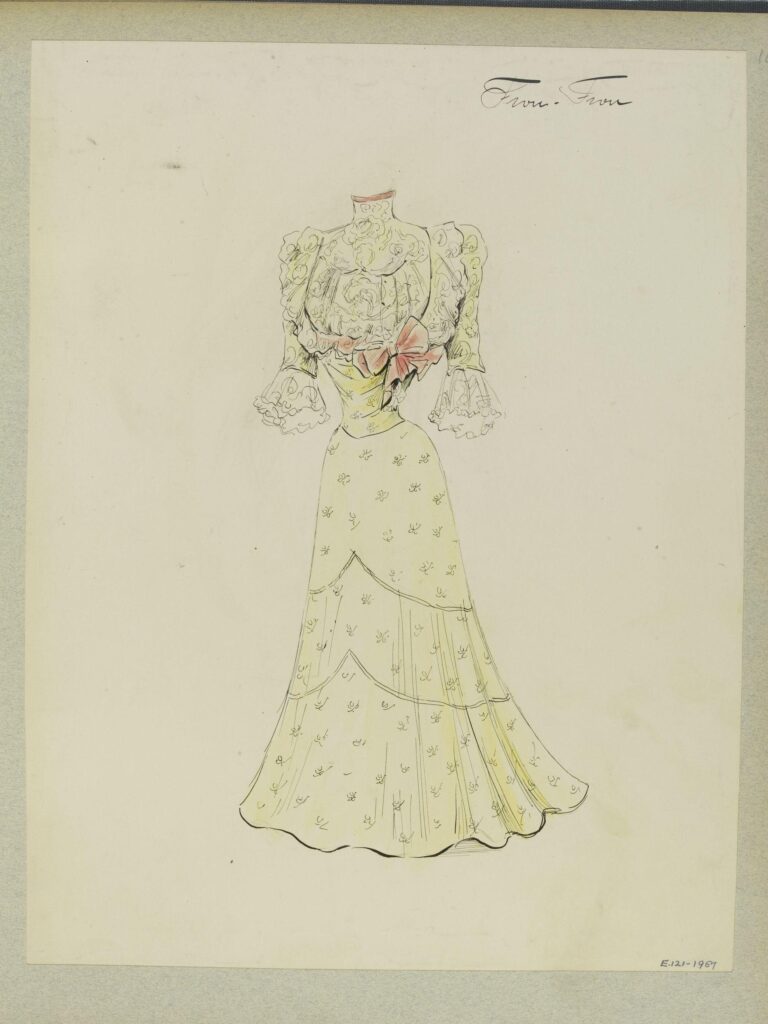
Image source: V&A Museum
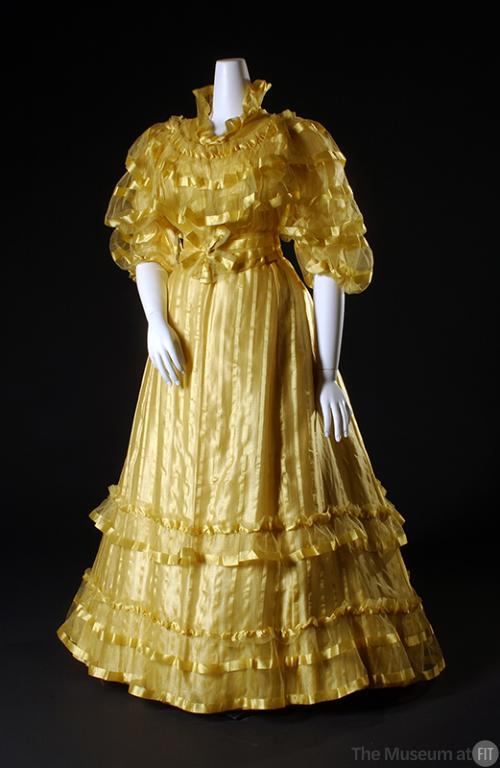
And in another chapter:
“Pure yellow is not much used for dress, orange on the one side, straw or amber on the other, being much richer, and more agreeable to the eye.”
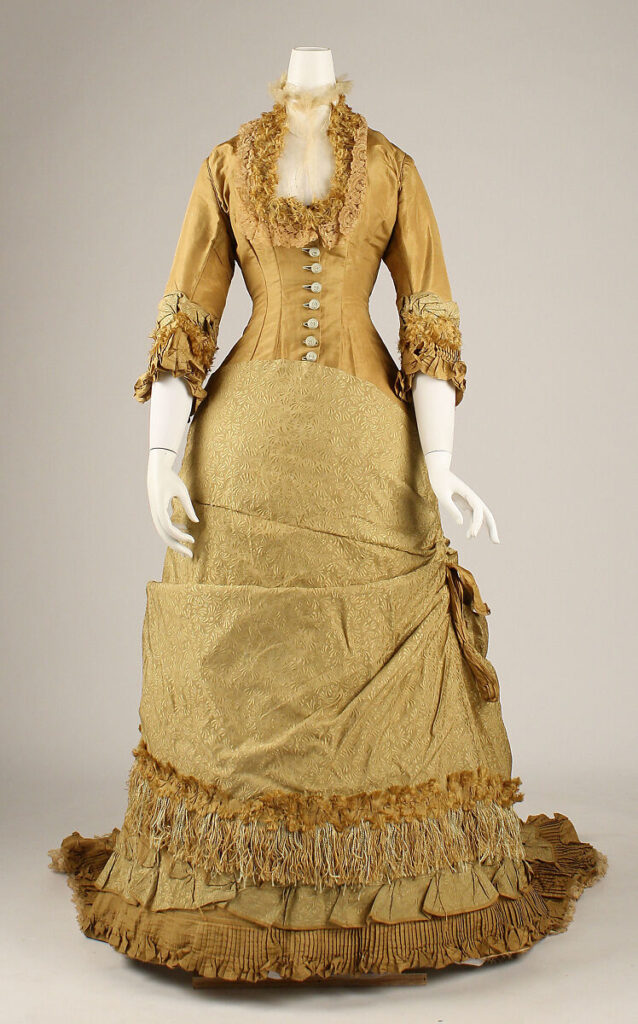
All that being said by the fashion experts of the time, I certainly found plenty of examples of bright, pure yellow in all styles of dress from the era.
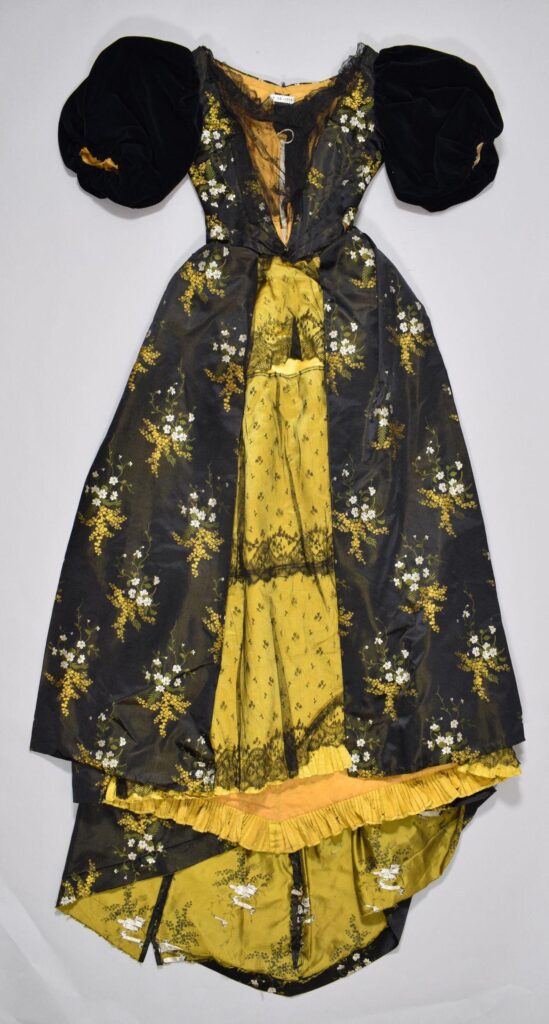
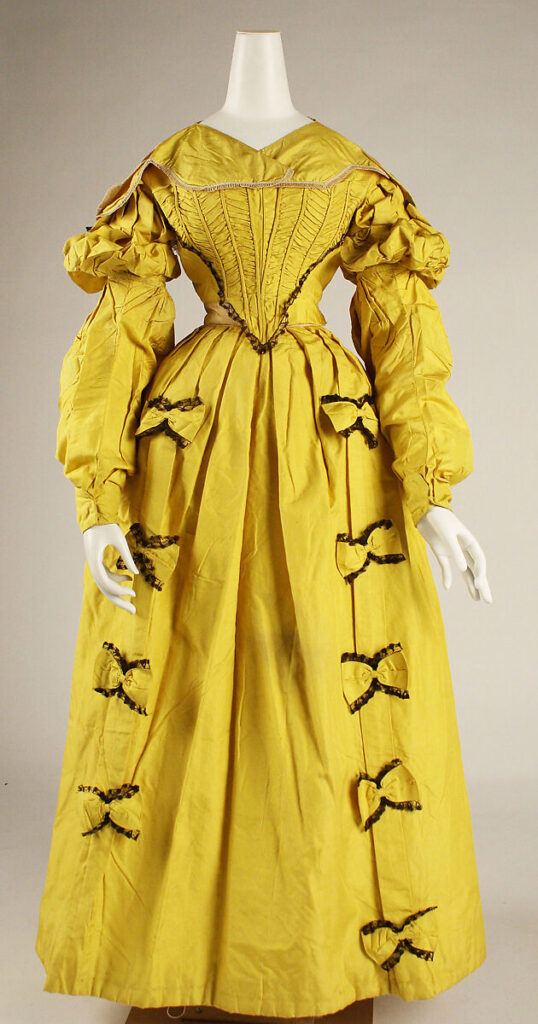
Eveningwear
Although The Art of Dressing Well encourages the use of pale yellow, Color in Dress recommended reserving it for evening wear:
“The union of yellow and white is agreeable for evening dress, lighting up well, but it is dull and poor for day costume.” –Color in Dess
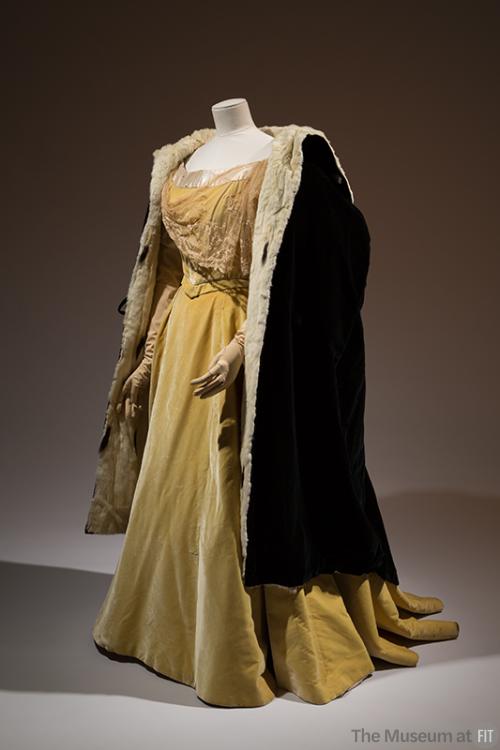
FIT Museum
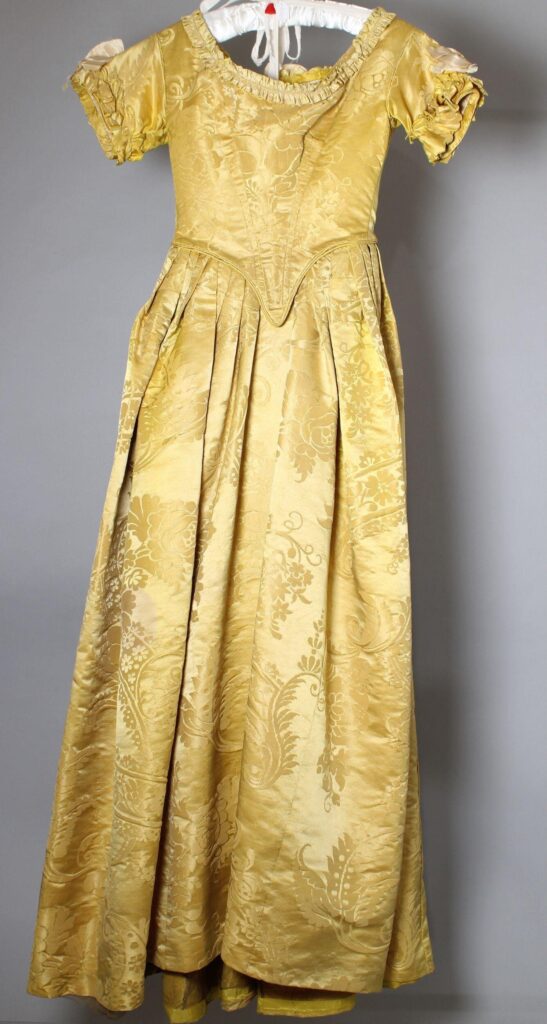
Image source: V&A Museum
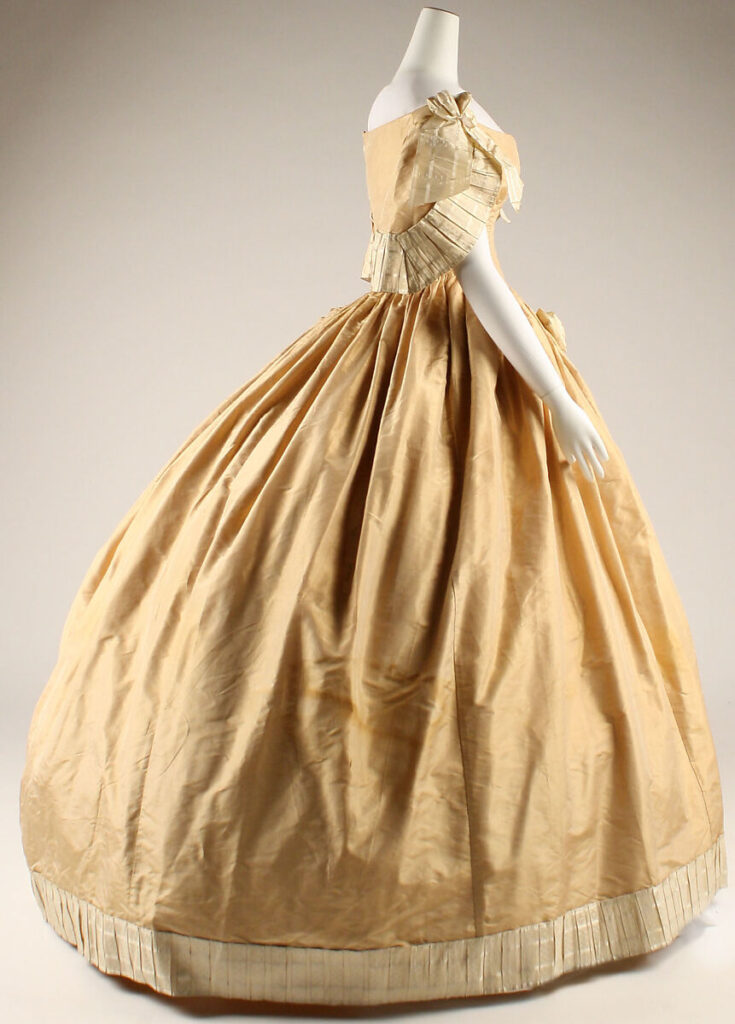
Mix it with…
Victorians were much concerned with the pairing of colors. I saw multiple references to it being paired with dark colors, namely purple and black.
“It harmonizes best with its complementary, purple. Black is also of great value as a trimming and may be used freely.” –The Art of Dressing Well
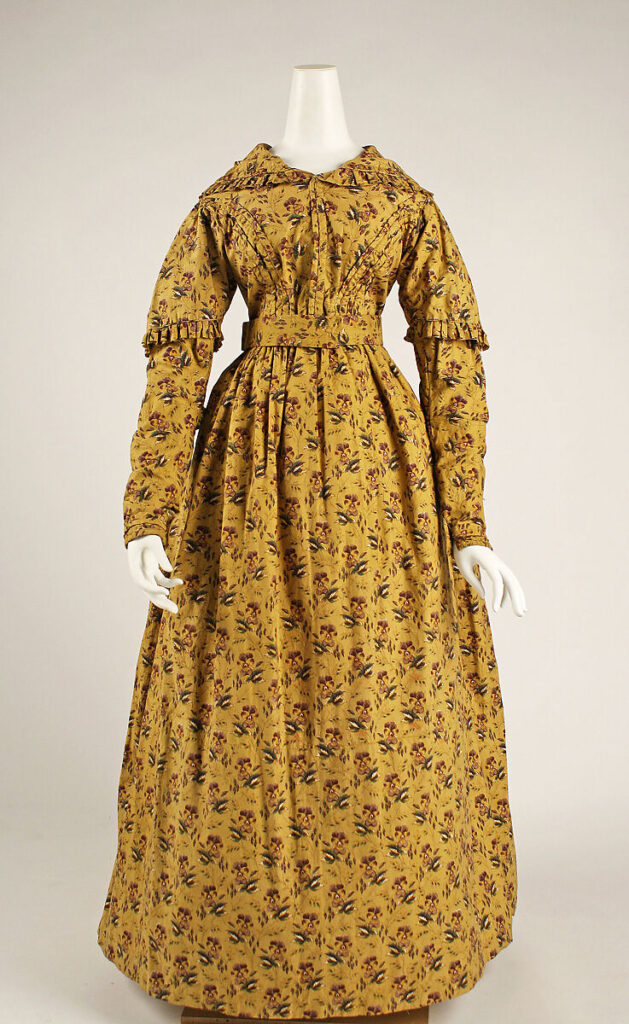
Color in Dress advises the following combinations:
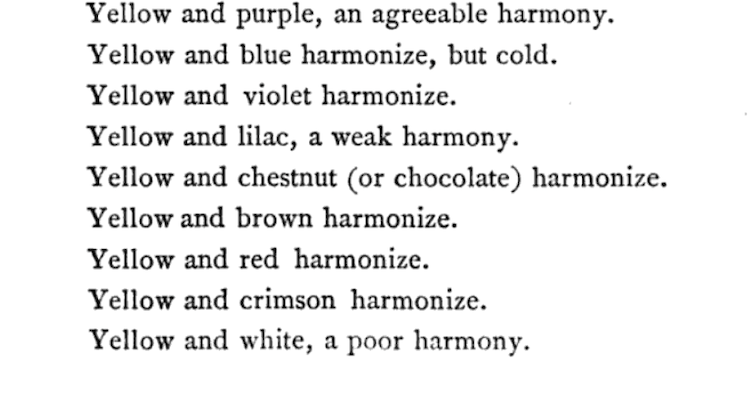
The suggestion of yellow and black was one I saw multiple times and also found many examples of.
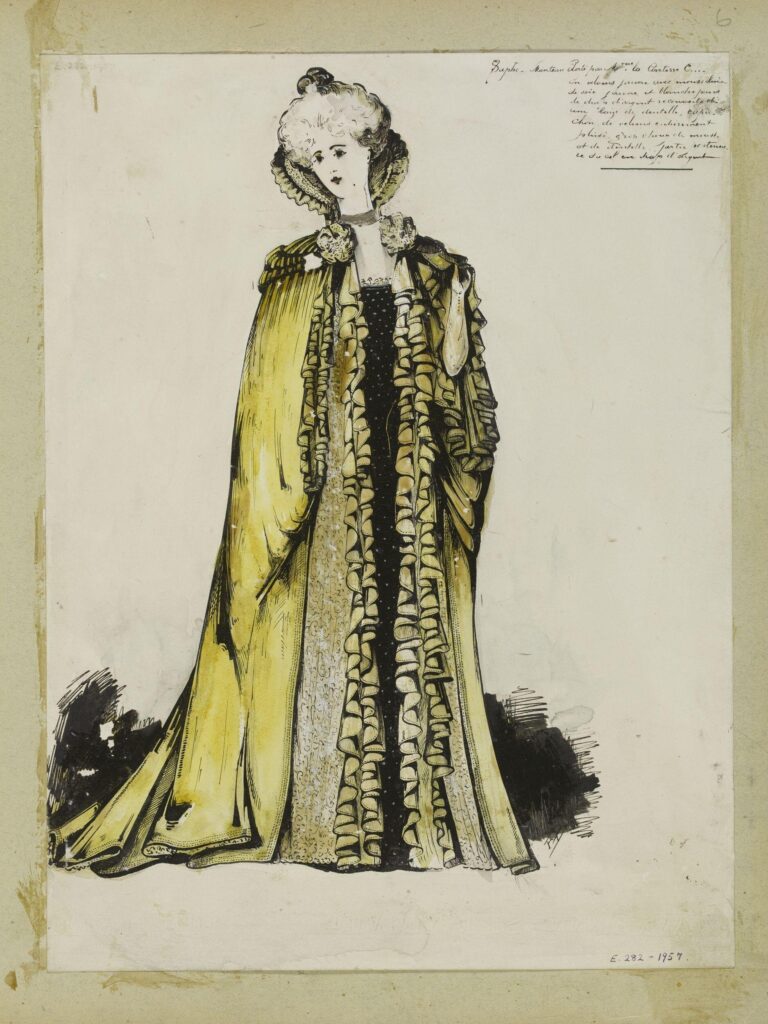
Image source: V&A Museum
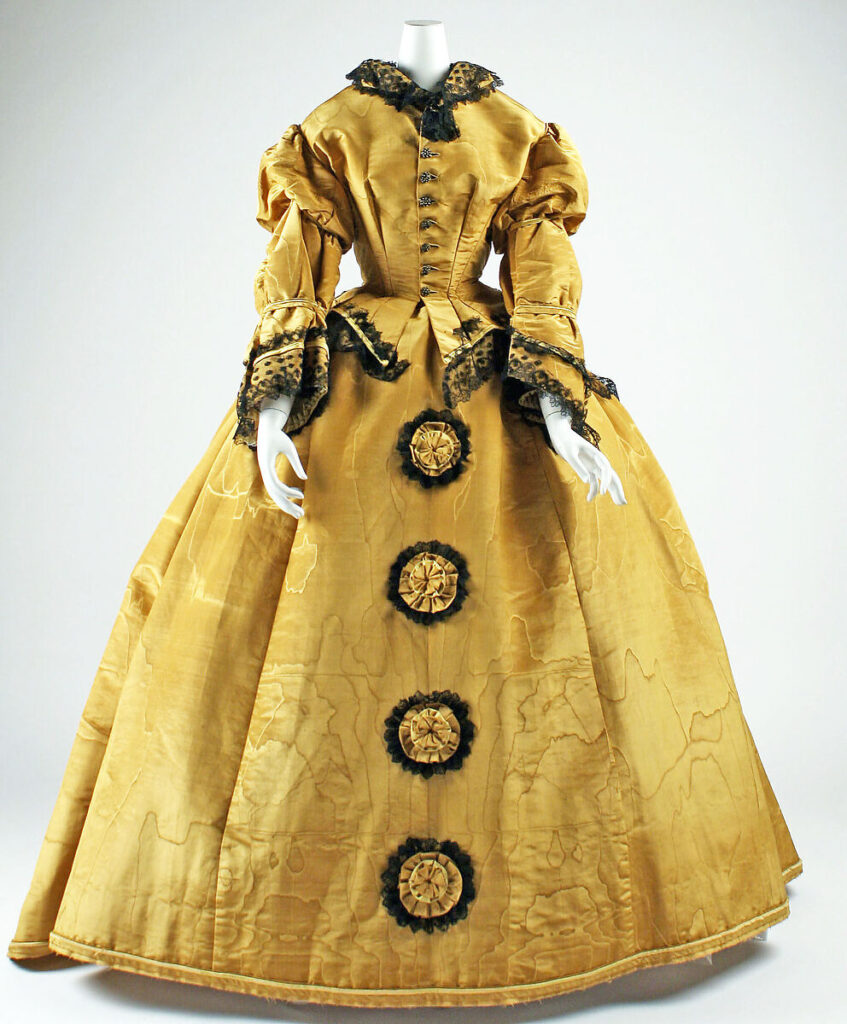
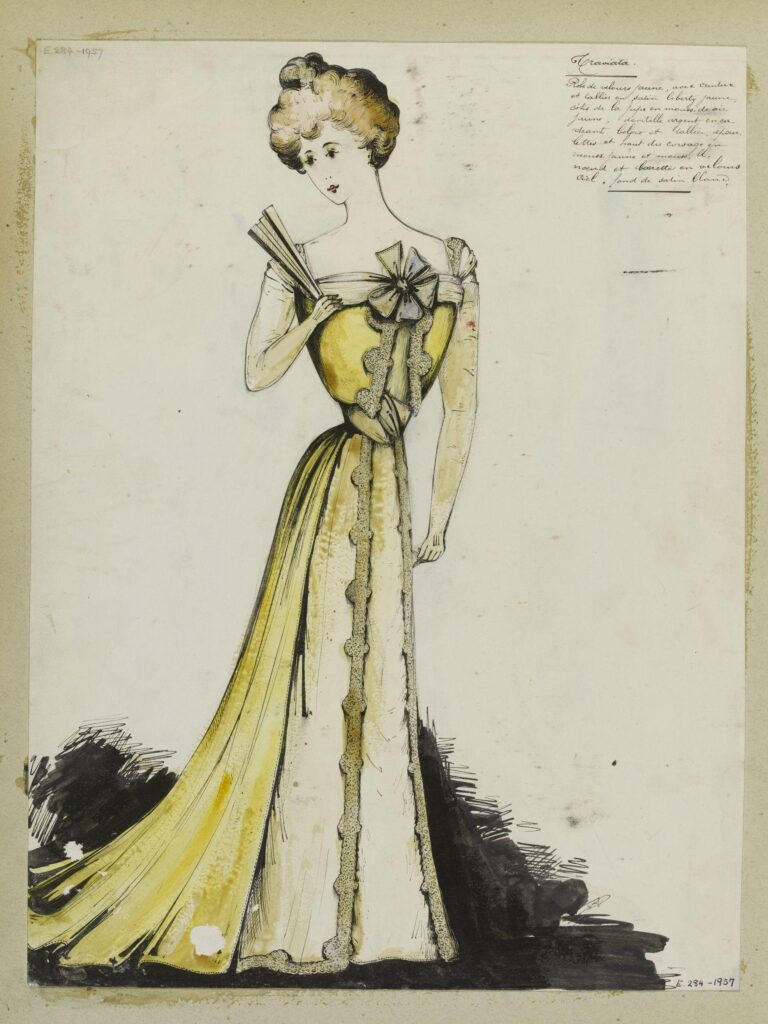
Image source: V&A Museum
The popularity of yellow and black extended even to under garments.
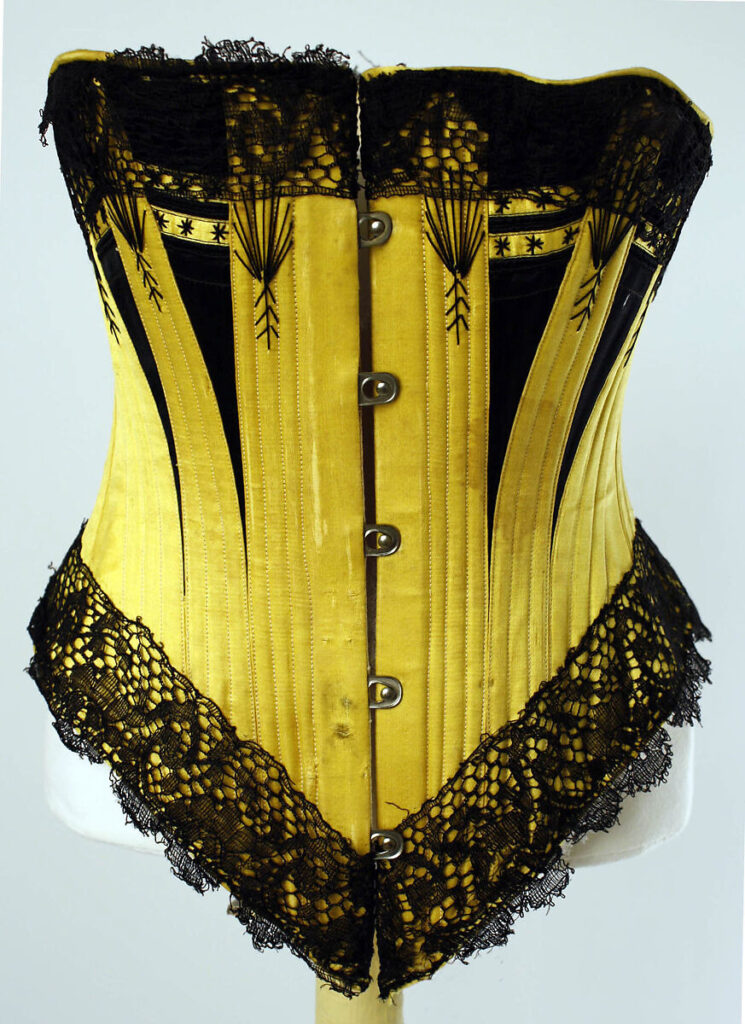
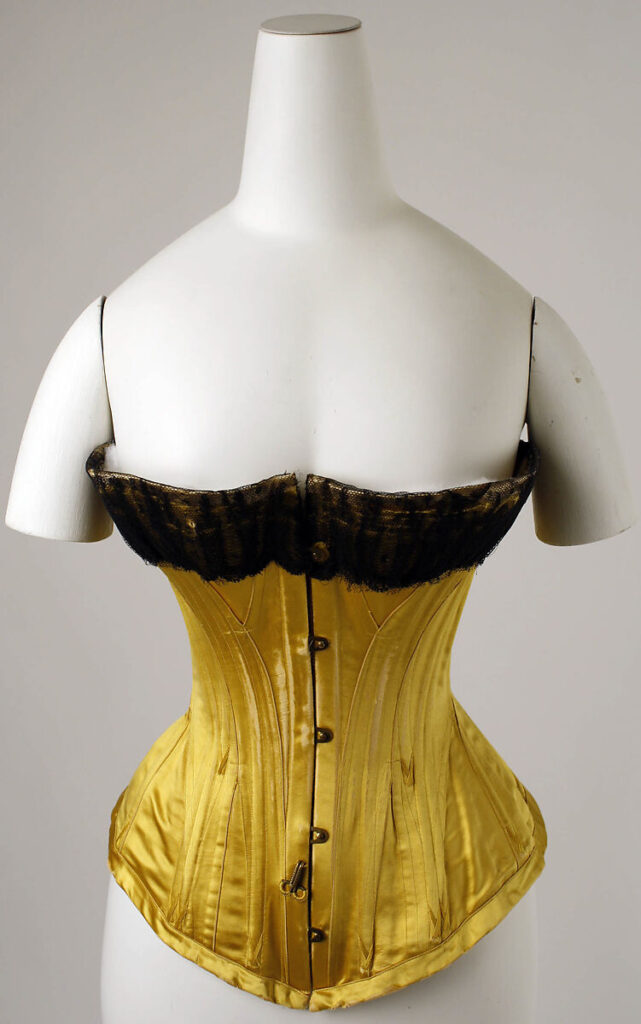
Complexion!
There was considerable attention given to one’s complexion and selection of one’s clothing. Yellow was a color that one needed to consider carefully. Some, for instance, were warned away from it:
“No lady, then, should wonder if her blue eyes were less effective when she wore a bright blue dress, and a yellow dress would utterly destroy the effect of bright blond hair of the reddish-gold would ill bear knots of orange ribbons.” –Art of Dressing Well
“It is advisable to neutralize any unpleasant tint which the complexion may contain, such as too much yellow, which has a decided tendency to give a sallow and unhealthy cast to the skin.” –Color in Dress
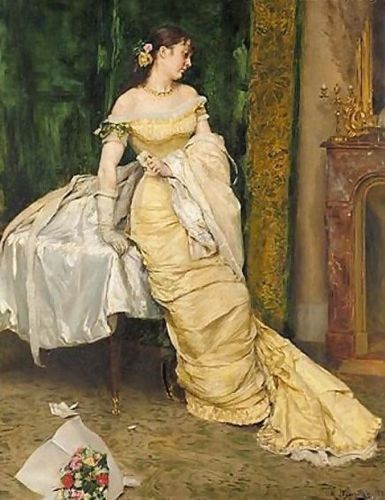
Others were encouraged to use it liberally:
“Yellow, Maize, and Gold-color suit the Florid Brunette, because, while they contrast in a highly favorable manner with the hair and eyes, intensifying them by the addition of purple, they harmonize by analogy of purple, they harmonize by analogy with the tints of the complexion, and neutralize, to a considerable degree, any superabundance of yellow they may naturally contain.” –Color in Dress
“When the complexion displays more orange than yellow in its tints, an increase of red is given to it by the use of yellow or maize in dress.”
-Color in Dress
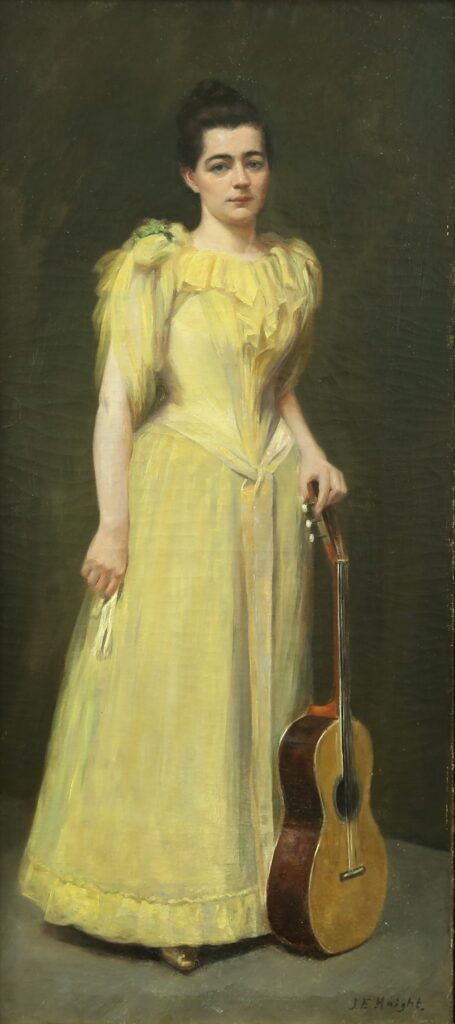
Accessories
It is always interesting to research colors in women’s fashion during this time. There are few references to accessories in my sources, yet it is easy to see what colors were in favor during what decades and for what accessories.
Did you know, for instance, that yellow was a popular color for shoes in the Victorian era?
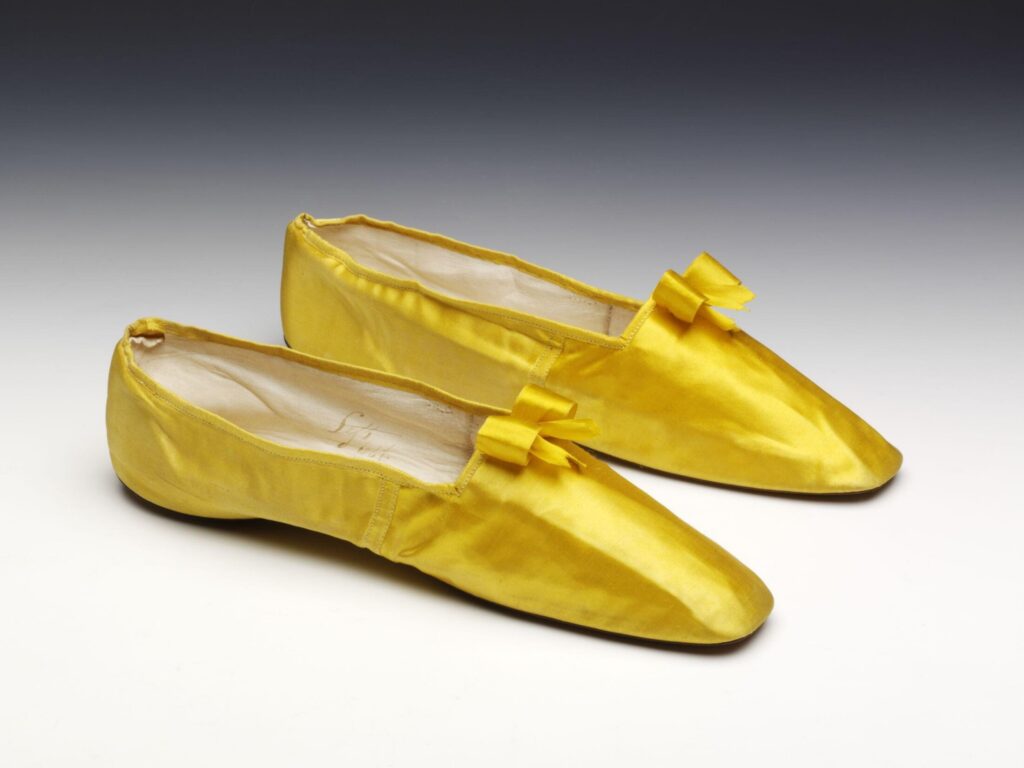
Image source: V&A Museum
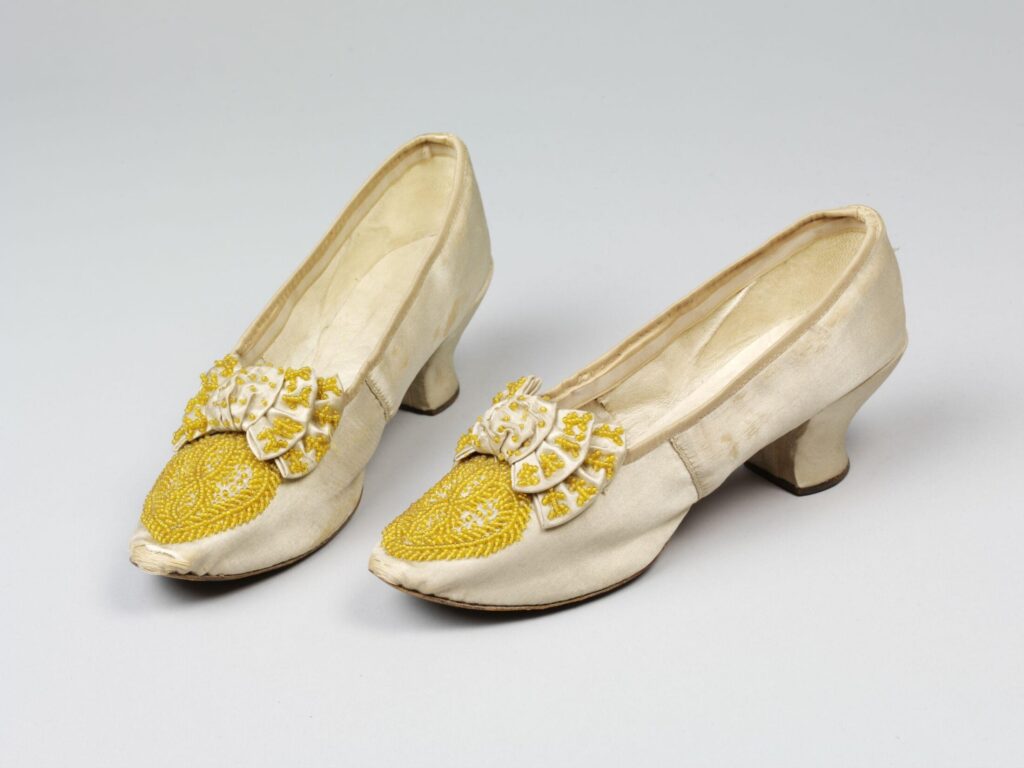
Image source: V&A Museum
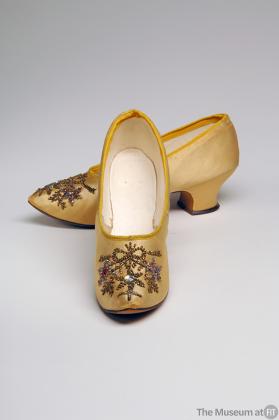
The popularity of yellow and black is seen in shoes as well:
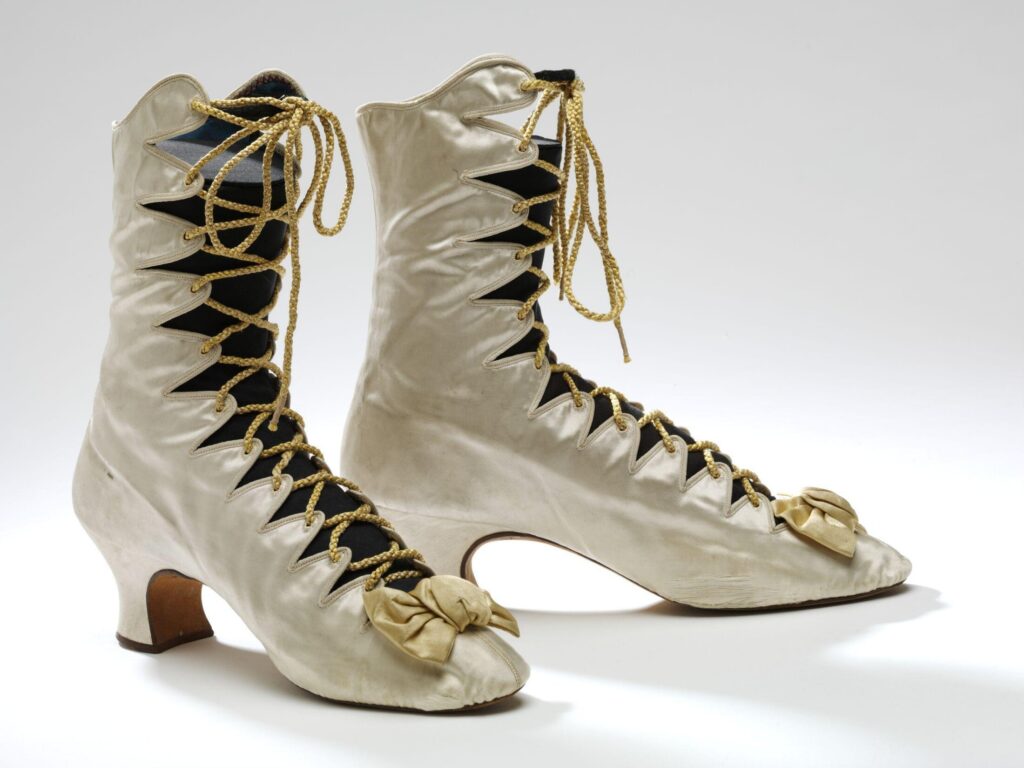
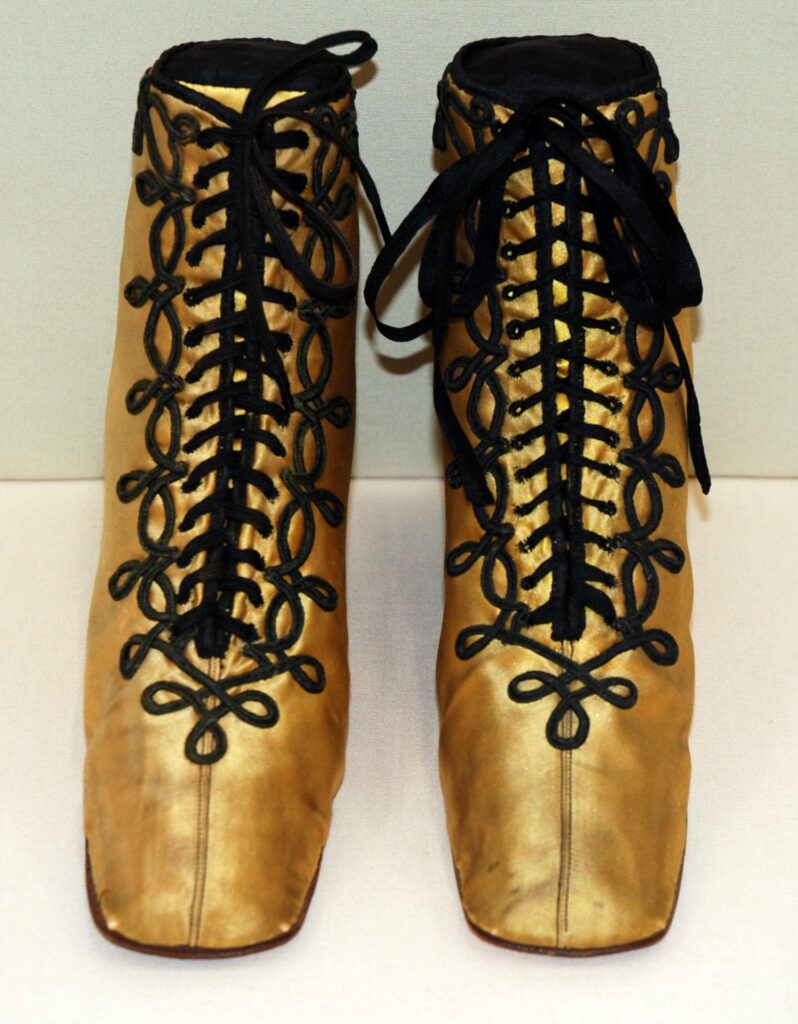
Framing the face
“A yellow bonnet is favorable to this type, but, as it approaches near to and surrounds the face, it should have a considerable proportion of its influence neutralized, this may be done by the introduction of violet, purple, or deep blue flowers…” –Color in Dress
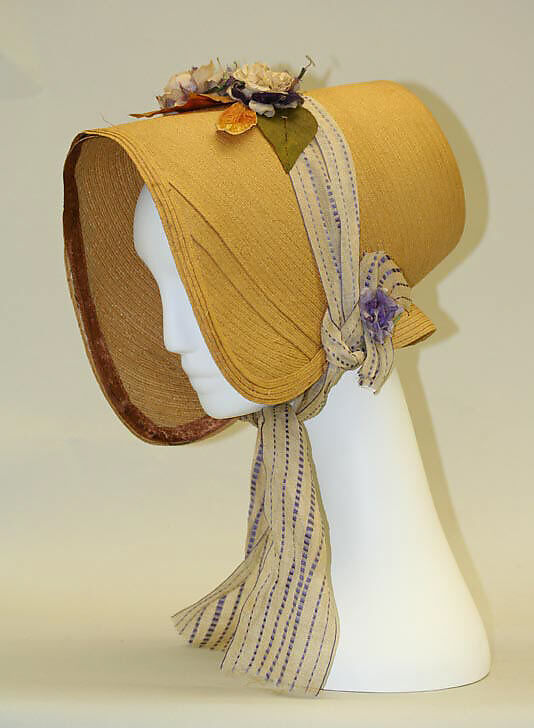
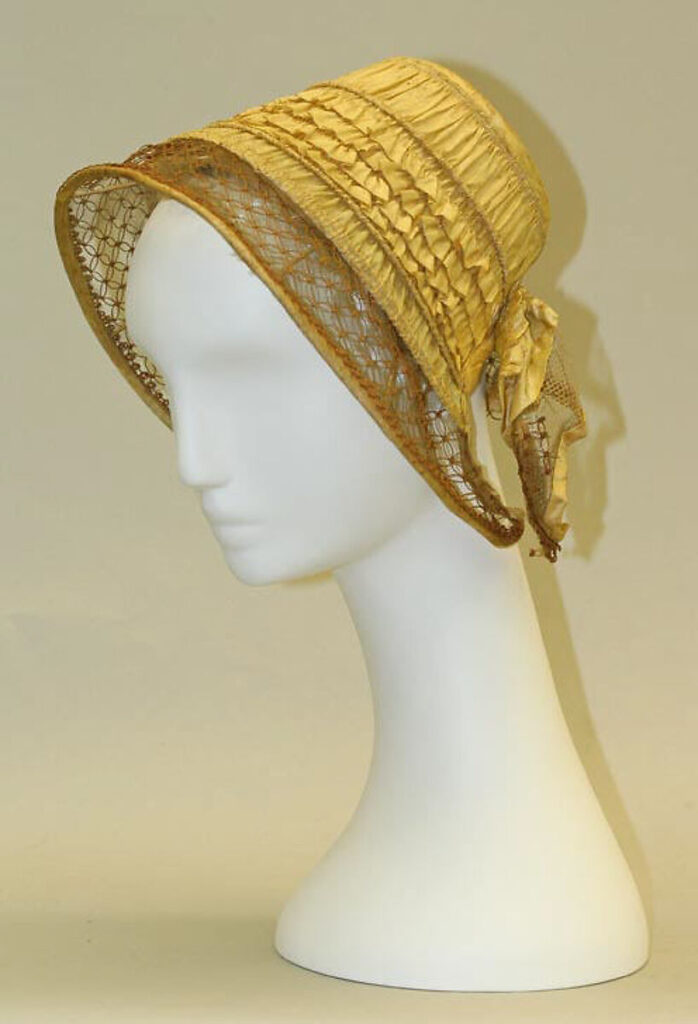
More from our Colors in the Victorian Era series:
Seeing red: colors in the Victorian era
Purple, please. Colors in the Victorian era



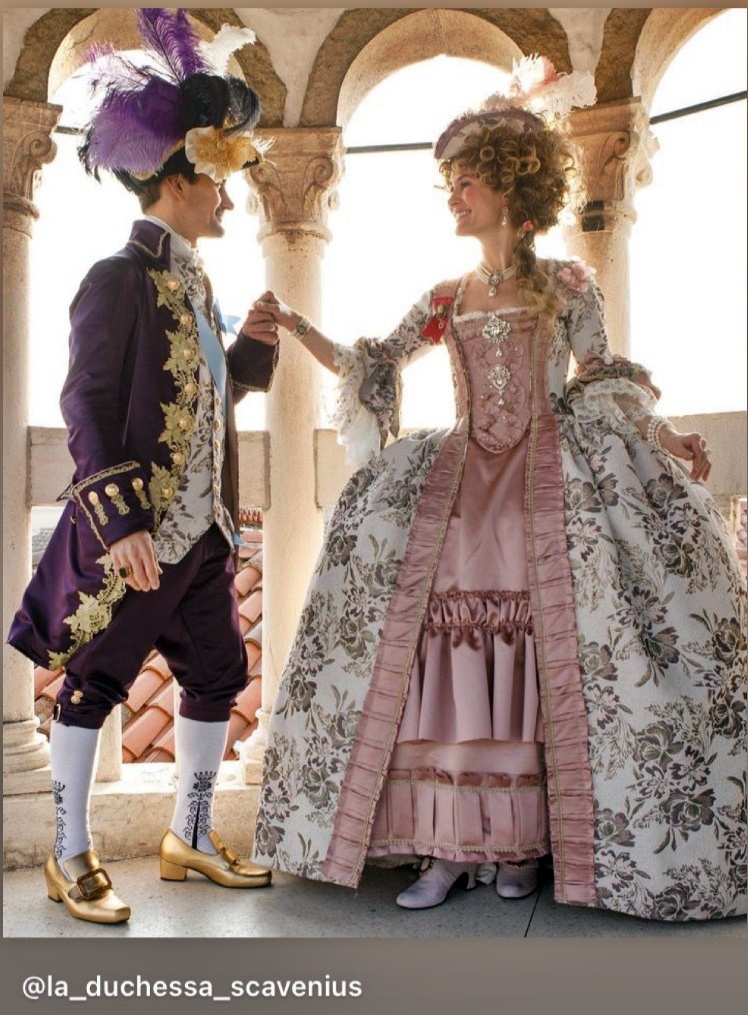
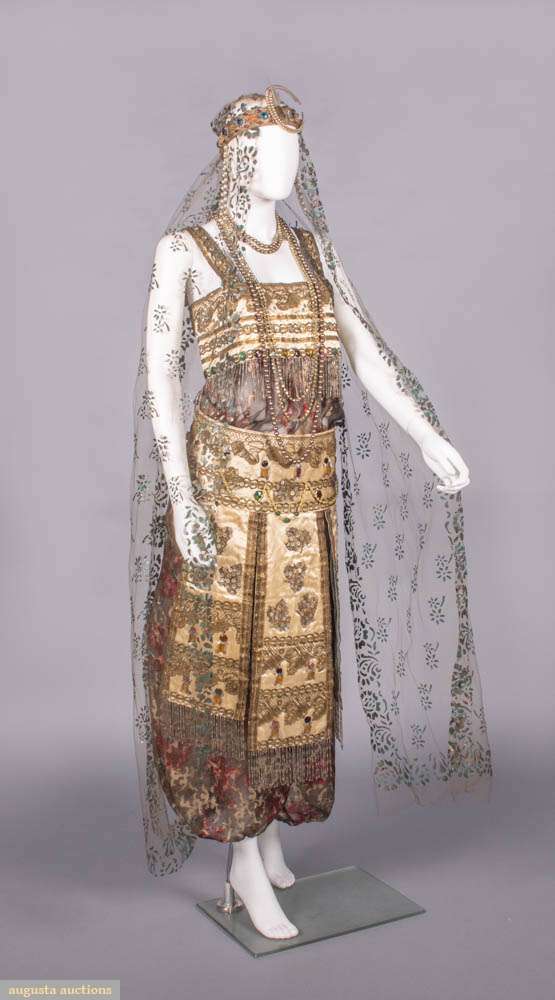









Leave A Comment